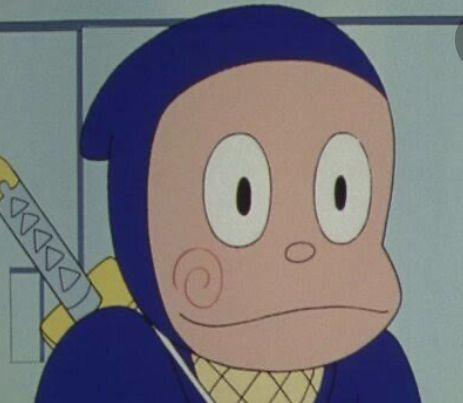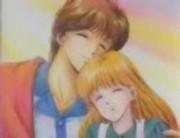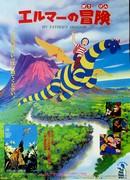The appeal and appreciation of Ninja Hattori-kun: Reevaluating the good old ninja anime

"Ninja Hattori-kun": The eternal ninja storyNinja Hattori-kun, which aired from 1981 to 1987, is a TV anime series based on the original work by Fujiko Fujio A, and entertained viewers for a long period of 694 episodes. This anime begins with Ninja Hattori-kun, who has trained in the village of Iga, moving to Tokyo to continue his training and becoming a boarder at the Mitsuba family home. There, he meets the Mitsuba family's only son, Kenichi, and his friends, as well as rival Koga ninja Kemumaki and his friends. Hattori-kun gets caught up in various incidents, but each episode depicts his exploits as he shows off new ninjutsu techniques. Background and original story"Ninja Hattori-kun" is originally a manga by Fujiko Fujio A, which was serialized in "Shonen Sunday" from 1964 to 1968. Fujiko Fujio A is one of a duo of manga artists known by the pen name Fujiko Fujio, and his works are loved by a wide range of people, from children to adults. "Ninja Hattori-kun" is one of them, and its humorous story that combines the world of ninjas with modern society has captivated many readers. The anime adaptation retained the essence of the original work while making it even more appealing as a television series. In particular, the long broadcast of 694 episodes became something viewers looked forward to every week and helped create a large fanbase. Story and CharactersThe story of "Ninja Hattori-kun" begins with Hattori-kun staying with the Mitsuba family. Kenichi, the only son of the Mitsuba family, is amazed by Hattori-kun's ninjutsu but develops a friendship with him. Kenichi's friends and family also get used to Hattori-kun's presence, and together they face various incidents. Kemumaki, a Koga ninja who is a rival of Hattori-kun, attends the same elementary school as Kenichi, but hides his true identity and tries to sabotage Kenichi in various ways. However, thanks to Hattori-kun's ninjutsu and the power of friendship, Kemumaki's plans end up failing every time. The voice actors for the main characters are also impressive, including many popular voice actors of the time, such as Ayako Hori as Hattori-kun, Masako Sugaya as Kenichi, and Kaneta Kimotsuki as Kemumaki. The performances of these voice actors bring out the individuality of the characters even more. Production and staff"Ninja Hattori-kun" was produced jointly by TV Asahi, Asahi Tsushinsha, and Shin-Ei Animation. The general director was Sasagawa Hiroshi, the supervisor was Suzuki Shinichi, the series was composed by Sakurai Masaaki, and many other talented staff members participated in the scriptwriting, including Shiroyama Noboru, Kishi Muneo, Asao Rumiko, Koyama Mayumi, Kishima Nobuaki, and Naka Hiroko. In addition, professionals from various fields were gathered together, with Tominaga Sadayoshi and Nakajima Chuji as animation directors, Miyano Takashi as art director, Kadohara Yukie as director of photography, Okuma Akira as sound director, and Kikuchi Shunsuke as music composer. Thanks to the efforts of these staff members, "Ninja Hattori-kun" achieved high-quality animation and story development, and became a work loved by viewers. In particular, Shunsuke Kikuchi's music is an important element in enhancing the atmosphere of the anime, and is loved by many fans. Episodes and Ninjutsu"Ninja Hattori-kun" was broadcast for a long period of time, with 694 episodes, and so many different episodes were depicted. The scenes where Hattori-kun shows off new ninjutsu techniques were always a highlight, and amazed the viewers. For example, a wide variety of ninjutsu techniques appear, such as the technique of creating a clone, the technique of becoming invisible, and even the technique of flying. These ninjutsu techniques are used ingeniously in line with the progression of the story, and are designed to keep the viewers from getting bored. Each episode has a different theme, depicting universal themes such as friendship, hard work, and justice. These themes resonate with adults as well as children, which is one of the reasons why the show is loved by so many viewers. Social impact and evaluation"Ninja Hattori-kun" was highly praised when it was first broadcast, and was loved by many viewers. It was especially fun for children every week, and inspired them to become fascinated with the world of ninjas. It also sparked interest in ninja culture and history, and had an educational effect. Furthermore, the success of the anime led to a reevaluation of the original manga, raising interest in Fujiko Fujio A's work as a whole. "Ninja Hattori-kun" remains one of Fujiko Fujio A's masterpieces and is still loved by many fans today. Remakes and sequelsThe popularity of "Ninja Hattori-kun" did not wane even after it ended its run, and remakes and sequels were produced in various media. In particular, a new anime series was produced in the 1990s, and it was even made into a movie in the 2000s. These remakes and sequels retained the appeal of the original while developing the story from a new perspective, once again attracting many fans. "Ninja Hattori-kun" has also been highly praised overseas and has been broadcast in many countries, helping to spread the appeal of Japanese ninja culture and anime to audiences around the world. Fan Community and EventsThe Ninja Hattori-kun fan community remains active even after the show has finished airing. Fans share information on the Internet through blogs and social networking sites, and Ninja Hattori-kun is sometimes featured at annual anime events. These events attract many fans, with talk shows featuring voice actors and staff, and cosplay contests for fans. Sales of merchandise are also booming, with a wide variety of products on sale, including figurines, T-shirts, stationery, etc. These goods are popular among fans as collector's items, and market prices are soaring. Recommendations and how to watch"Ninja Hattori-kun" is a work that can be enjoyed by both children and adults, and is highly recommended for those who like ninjas and anime in particular. The interesting story, the charm of the characters, and the variety of ninjutsu are elements that keep viewers from getting bored. It also has an educational effect, and can be used to teach children about ninja culture and history. As for how to watch it, DVDs and Blu-rays are available, so you can purchase them and watch it. In addition, some of them are distributed through streaming services, so you can watch them online. Furthermore, you can enjoy the work on a deeper level by participating in fan communities and events. Conclusion"Ninja Hattori-kun" is a TV anime series based on the original work by Fujiko Fujio A, and it entertained viewers for a long period of time, with 694 episodes. The story, in which Hattori-kun solves various cases with the power of ninjutsu and friendship, was loved by a wide range of people, from children to adults. Even after the series ended, remakes and sequels were produced, and the fan community remains active. "Ninja Hattori-kun" continues to be loved by many fans as an eternal ninja story. |
<<: "Ichi Toilet": A touching story and its appeal that we can learn from everyone's songs
>>: New Dokonjo Gaeru: A thorough analysis of the appeal and evolution of the second series
Recommend
James Wan reveals the plot of The Conjuring 3: A new horror story and nightmares return
The DC movie "Aquaman" has not yet been...
Foreign masters made their own 3D model of Black Widow, which is almost the same as the image in the movie
Recently, foreign media discovered the Black Wido...
Holland's Uncharted movie to start filming in Berlin next February
According to discussingfilm, the film version of ...
Hand Shakers EX: A thorough review of new developments that exceed expectations and deepening of characters
"Hand Shakers EX": A deeper worldview a...
Still making money! The Russo brothers want to re-release "Avengers 4" after the film industry resumes work
Today (April 26, local time) is the first anniver...
Japanese manga "One Week Friends" will be adapted into a domestic live-action movie
According to the Film Bureau's filing, the ma...
Review of "Rainbow Feet": A moving story and beautiful visuals
"Rainbow Feet" - A boy's great adve...
A thorough review of "We are Aliens!" What is the appeal of Minna no Uta?
"We are Aliens!" - The appeal of Minna ...
A thorough review of Rumiko World's "Warau Tantei"! Introducing its appeal and recommended points
"Rumiko World: Laughing Target": An OVA...
Restart after 10 years! Hiromu Arakawa's famous short story "Raiden 18" is revived in a new chapter
Hiroki Arakawa, a female cartoonist famous in the...
Ghibli animations often use celebrity guest voice actors, and there are constant voices from both sides
In the dubbing industry, some animation studios p...
Trigger's Cyberpunk 2077 spin-off animation opening OP released
Today (July 4), Netflix released the opening anim...
New version of "Hellboy" released new stills, the Baron looks more like a teenager
Many fans may not have been too optimistic about ...
The official website of the new animation "Magic Hero Legend" is online, and the main characters remain the same
With the successful launch of Sunrise Animation&#...
The appeal and reviews of "Dragonaut: The Resonance": A moving story and deep characters
A comprehensive review and recommendation of Drag...









